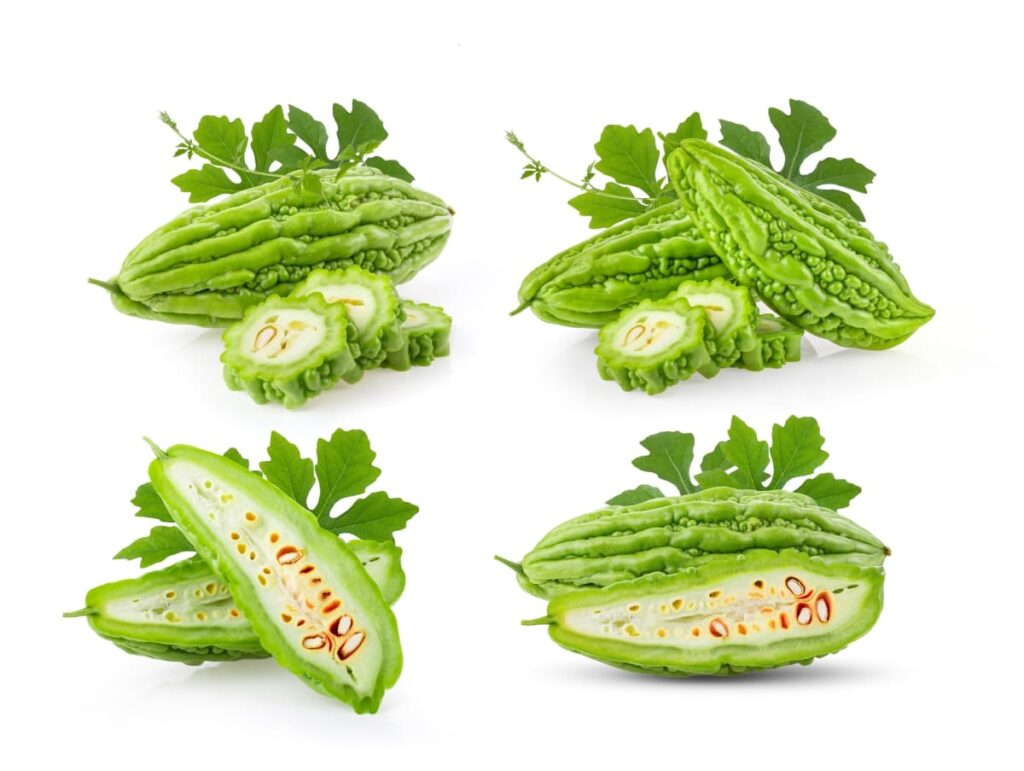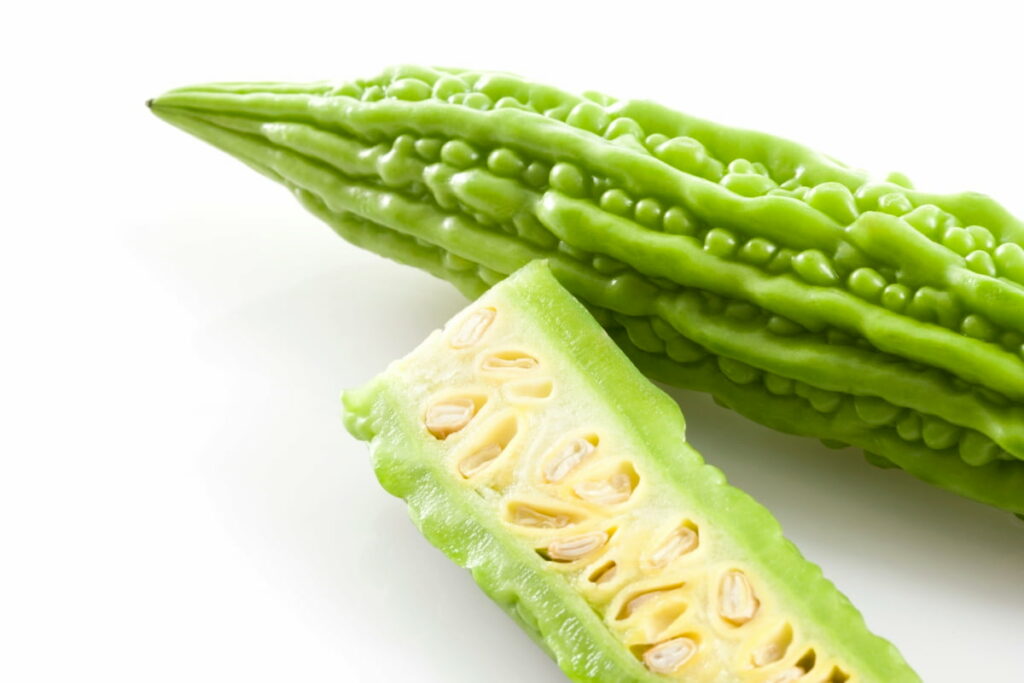Bitter Melon Greenhouse Growing offers a protected environment for cultivating this nutritious vine. From Hydroponic Bitter Melon Cultivation to Organic Bitter Melon Farming, greenhouse gardening provides optimal conditions for growth. Learn essential Bitter Melon Plant Care and Harvesting Techniques for successful production.

How to Grow Bitter Melon in Greenhouse
Introduction to Bitter Melon
The cucurbit family of vegetables includes bitter melon, commonly referred to as bitter gourd, which is a tropical and subtropical vegetable. It is extensively grown for its edible fruits, which have a bitter flavor and several health advantages, across Asia, Africa, and Latin America. Vitamins, minerals, antioxidants, and phytochemicals found in bitter melon can help reduce inflammation, blood sugar, cholesterol, and risk of cancer and diabetes.
Understanding Bitter Melon: Characteristics and Health Benefits
Greenhouse growing offers a profitable and controlled environment for farmers and gardeners to extend growing seasons, increase yield, and improve product quality. However, careful planning, management, and maintenance are necessary to ensure optimal growth and productivity of bitter melon plants.
Importance of Greenhouse Growing for Bitter Melon
The regulated conditions provided by greenhouse growth are essential for the production of bitter melon. It protects plants from bad weather and allows for year-round production. Greenhouses maximize development by controlling light, humidity, and temperature. In addition, they safeguard crops against pests and diseases, guaranteeing increased yields and stable quality and improving total production efficiency.
Setting Up Your Greenhouse
The first step in growing bitter melon in a greenhouse is to choose the right location and type of greenhouse for your project. It would help if you considered the following factors when selecting your greenhouse site and design.
Choosing the Right Location and Type of Greenhouse
Choose a suitable location with good access to water, electricity, and transportation, avoiding areas prone to flooding, strong winds, or extreme temperatures. Choose a type of greenhouse that suits your budget, space, and climate, such as hoop houses, cold frames, polytunnels, or glasshouses. Choose a size that accommodates your desired number of plants and allows enough space for walking, working, and harvesting. Orient your greenhouse to maximize sunlight exposure and minimize shading, considering wind direction and ventilation system adjustments.
Essential Greenhouse Equipment and Supplies
To grow bitter melon plants, choose well-drained, fertile, and pH-balanced media, sterilize them before planting, and use large, drainage-holed pots. Install a support system and an efficient irrigation system, and monitor water quality regularly. Use organic, chemical, or fertigation fertilizers, implement pest control, and install a climate control system to regulate temperature and humidity.
Seed Selection and Germination
The next step in growing bitter melon in a greenhouse is to select high-quality bitter melon seeds and germinate them successfully.
Selecting High-Quality Bitter Melon Seeds
Choose a suitable bitter melon variety for your market, climate, and preferences, such as white, green, or hybrid varieties. Choose high yield, quality, disease resistance, and consumer acceptance. Source your seeds from a reputable, certified supplier, checking the label and expiry date. Avoid using old, damaged, or diseased seeds, as they may have low germination rates or poor performance.
Steps for Successful Seed Germination
To improve the germination of bitter melon seeds, treat them before planting using methods like soaking, scarifying, or priming. Disinfect them with fungicide or bleach. Sow them in sterile, moist media, space them apart, cover them lightly, water gently, and place them in a warm, dark place. Monitor germination daily and provide adequate moisture and ventilation. Expect germination within 7-10 days.
In case you missed it: Bitter Gourd Farming Information Guide

Planting and Spacing
The next step in growing bitter melon in a greenhouse is to transplant your seedlings into the greenhouse and space them properly.
Transplanting Seedlings into the Greenhouse
Transplant bitter melon seedlings into a greenhouse when they have 3-4 true leaves and are 15-20 cm tall. Avoid transplanting during hot or cold days to avoid shock. Carefully water and apply starter fertilizer for quick growth.
Proper Spacing and Arrangement of Plants
You should space your bitter melon plants according to their variety, trellis system, and pruning method. It would help if you generally spaced your plants at a distance of 60-90 cm within rows and 120-180 cm between rows. You should also arrange your plants in a way that allows enough air circulation, light penetration, and easy access for maintenance and harvesting.
Climate and Environmental Control
The next step in growing bitter melon in a greenhouse is to maintain optimal temperature, humidity, and light intensity for your plants.
Maintaining Optimal Temperature and Humidity
To maintain bitter melon plants in a greenhouse, maintain a temperature range of 25-30°C during the day and 18-22°C at night, avoiding sudden fluctuations. Use heaters, coolers, or fans to regulate temperature and humidity, avoiding excessive or insufficient humidity to prevent fungal diseases and poor pollination.
Ventilation and Lighting Requirements
To ensure optimal growth and fruit production, provide adequate light intensity for bitter melon plants, avoiding excessive sunburn or etiolation. Use natural sunlight, artificial lights, or shading materials to regulate light intensity based on season and time of day. Use ventilation systems to regulate the humidity in your greenhouse according to the moisture level.
Watering and Nutrition
The next step in growing bitter melon in a greenhouse is to water and fertilize your plants regularly and properly.
Efficient Watering Techniques for Bitter Melon
Water is essential for the growth of bitter melon plants, especially while they are in the blooming and fruiting stages. Fruit cracking, fungus infections, and root rot can all result from overwatering. Water can be saved, evaporation can be decreased, weed development can be inhibited, and fruits and foliage cannot get wet by using drip irrigation, which is an effective way to irrigate plants.
A water supply, filter, pressure regulator, mainline pipe, sub-main lines, drip lines, stakes, valves, and a timer are required for the setup of a drip irrigation system. The amount of soil, plant size, temperature, humidity, and rate of evapotranspiration all affect how often a plant has to be watered.
Fertilization Schedule and Nutrient Requirements
Heavy feeders, such as bitter melon plants, require regular fertilization to produce high-quality fruits. Fertilizers supply vital nutrients such as nitrogen, phosphorus, potassium, calcium, magnesium, sulfur, iron, manganese, zinc, copper, boron, molybdenum, and chlorine. They should be administered based on the findings of soil tests and the demands of the plants. A balanced fertilizer solution with equal amounts is recommended, with frequency and duration based on factors like watering and leaf tissue analysis.
Pest and Disease Management
Bitter melon plants are susceptible to various pests and diseases that can reduce their growth and yield.
Common Pests and Diseases in Greenhouse Conditions
White-winged insects, including whiteflies and thrips, can cause significant damage to bitter melon plants. They suck sap from leaves, causing yellowing, curling, wilting, and dropping. Thrips feed on flowers and fruits, causing scarring and abortion. They can transmit viral diseases like TSWV and INSV, and leafminers tunnel into leaves, reducing photosynthesis and transpiration.
Organic and Chemical Control Methods
- Biological agents: Predatory insects, parasitic wasps, entomopathogenic fungi.insects (e.g., ladybugs, lacewings), parasitic wasps (e.g., Trichogramma)
- Botanical pesticides: Neem oil, garlic extract, pyrethrum.
- Homemade solutions: Soap water, vinegar water, baking soda water.
- Synthetic pesticides: Insecticides, fungicides, bactericides. (e.g., imidacloprid, abamectin), fungicides (e.g., mancozeb, chlorothalonil), or bactericides (e.g., streptomycin, copper sulfate).
- Plant growth regulators: Gibberellic acid, cytokinins, ethylene inhibitors.
In case you missed it: Bottle Gourd Cultivation Information Guide

Pruning and Training
Pruning and training are essential practices for bitter melon plants grown in a greenhouse. Removing undesirable plant components, such as lateral branches, tendrils, blooms, or fruits, is known as pruning. Plants are trained by tying or supporting their main stem and branches.
Techniques for Pruning Bitter Melon Plants
- Single stem pruning: Suitable for low or medium-height greenhouses, retains one main stem per plant, ideal for long or cylindrical fruits.
- Double stem pruning: Suitable for high greenhouses, retains two opposite lateral branches at the first node above ground, ideal for round or oval fruits.
- Multiple stem pruning: Suitable for high greenhouses, retains several lateral branches at different nodes along the main stem, and is suitable for mixed fruit shapes.
Training Plants for Optimal Growth and Yield
- Vertical training: Main stem tied to a vertical stake or wire, suitable for single or double-stem pruning.
- Horizontal training: Main stem tied to horizontal wire on greenhouse roof, suitable for multiple stem pruning, fruits supported by nets.
- Inclined training: Main stem tied to inclined stake or wire at 45 degrees, suitable for single or double stem pruning; fruits hang freely.
Harvesting and Post-Harvest Handling
When bitter melon fruits achieve their maximum size and color, but before they begin to mature and turn yellow or orange, they are ready to be harvested. Depending on the seed variety, the growing environment, and the demand in the market, the harvesting time might range from 60 to 120 days following seeding.
Signs of Maturity and Harvesting Techniques
- Fresh consumption: Harvest green, firm, glossy bitter melons, 100-300g, with prominent ridges, every 2-3 days to maintain quality.
- Processing: Pick slightly mature, pale green, smooth fruits, 200-500g, every 4-5 days for optimal yield.
- Seed production: Harvest fully ripe, yellow/orange, soft fruits with high seed content every 7-8 days to prevent seed shattering.
Post-Harvest Care and Storage Tips
- Bitter melon fruits should be cooled immediately after harvest at 10-13°C with 85-95% humidity.
- Store in perforated packaging to allow ventilation and prevent moisture buildup.
- Keep away from ethylene-producing fruits to avoid premature ripening.
- Regularly inspect for decay or infestation, removing damaged fruits promptly.
- The optimal storage duration is up to two weeks, depending on various factors.
In case you missed it: Ridge Gourd Cultivation Information Guide

Conclusion
With proper Bitter Melon Pest Control and adherence to Bitter Melon Growing Tips, greenhouse cultivation ensures consistent yields. Whether starting from Greenhouse Bitter Melon Seeds or transitioning to protected environments, mastering the art of greenhouse gardening enhances the quality and sustainability of Bitter Melon production.
- Crops Grown in Summer Season: Best Choices for Summer Gardening
- Organic Pest Control for Tomato Farming
- How to Maximize Sheep Farming Profit
- Broccoli Varieties: Choosing the Right Cultivars for Your Farm
- How to Raise Pigs in Your Own Backyard: A Comprehensive Guide
- Budget Friendly Sheep Shed Ideas: Cheap and Low-Cost Tips
- How Much Do Cattle Farmers Make: Revenue Streams in Cattle Farming
- Management Pests and Diseases in Your Cotton Field
- Sheep Farming Business Plan for Beginners
